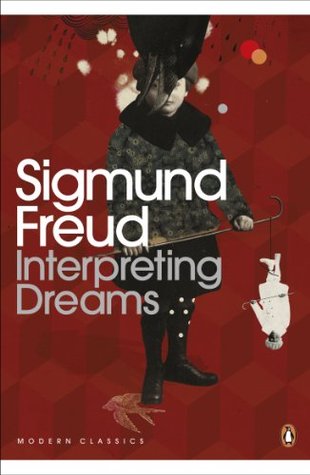More on this book
Community
Kindle Notes & Highlights
Read between
August 16 - August 27, 2018
A dream, one might say, is centred differently; its content is arranged around and revolves around other elements than the dream-thoughts.
so far as these logical relationships among dream-thoughts are concerned, dream has no means of representation at its disposal. It usually leaves such connecting words out of account, taking over only the objective substance of the dream-thoughts for processing. It is up to dream-interpretation to restore the context that dream-work has destroyed.
Dream has a particular predilection for drawing opposites together to form a single entity or representing them as such. Indeed, it even takes the liberty of representing any element by its optative opposite, with the result that one cannot, at first, know of any element capable of having an opposite whether in the relevant dream-thoughts it bears a positive or negative connotation.2
Identification consists in only one of the persons sharing a common characteristic that reaches the dream-content for the purpose of representation, whereas the other person or persons seem(s) to be suppressed so far as the relevant dream is concerned.
In blending, when extended to persons, the relevant dream-image already contains traits that are peculiar to those individuals rather than common to them – with the result that combining those traits definitely gives rise to a fresh entity, a mixed or composite person.
There is another kind of displacement that we have not mentioned at all so far. Yet analyses show us that it exists and that it announces itself through an exchange, whereby linguistic expression is substituted for the thoughts concerned.
Here we want to confine ourselves to saying that representation through the medium of a symbol is one of the indirect modes of representation, but that all sorts of indications warn us against indiscriminately lumping symbolic representation together with other types of indirect representation without having a clear conceptual understanding of such distinguishing characteristics. In some cases, what the symbol has in common with the actual thing for which it stands is obvious; in others it is hidden, making the choice of symbol appear puzzling.
The more time one spends resolving dreams, the more readily one has to accept that most adult dreams deal with sexual material and voice erotic wishes.
No other drive has, since childhood, had to undergo so much suppression as the sex drive in its many components;63 none has left unresolved so many powerful unconscious wishes that now, in the sleeping state, generate dreams. Never, in connection with interpreting dreams, should the importance of sexual complexes be overlooked – but neither, of course, should it be exaggerated to the point of excluding all else.
The claim that all dreams call for a sexual interpretation, against which a tireless polemic is being conducted in the literature, has no place in my Interpreting Dreams. In fact, it is nowhere to be found in seven editions of this book, and it stands in tangible contradiction to other things contained therein.
concealed dreams of sexual intercourse with one’s mother are many times more frequent than straightforward ones.67
For other dreams featuring dead people, the following rule often helped to point the way. If in the dream there is no reminder that the dead person is in fact dead, the dreamer is comparing himself to the dead person, dreaming of his own death, whereas a sudden occurrence in the dream of the surprised realization that ‘he’s been dead for some time, surely?’ is a protest against such commonality and a rejection, by the dreamer, of the significance of death.
Absurdity, in other words, becomes a means whereby dream-work represents contradiction – reversal of a material relationship between dream-thoughts and dream-content, for instance, or exploitation of a feeling of motor inhibition. However, the absurdity of a dream should not be translated by a simple ‘no’; it is intended to reflect the arrangement of the dream-thoughts at the same time as deriding or laughing at the contradiction. This is the only purpose for which dream-work comes up with something ridiculous. Here again it turns a portion of the latent content into a manifest form.9
A dream, then, is often most deeply meaningful where it appears to be craziest. All down the ages those with something to say that they could not say without danger have readily donned the fool’s cap.
The unconscious is in fact the real psychical, as unknown to us in terms of its inner nature as the reality of the outside world and as incompletely rendered to us by the data of consciousness as the outside world is rendered by the information supplied by our sense organs.
the respect that ancient peoples accorded to dream is an act of homage (based on correct psychological premonition) to what is untamed and indestructible in the human mind, the demonic element that furnishes the dream-wish and that we find again in our unconscious.


